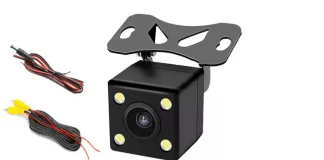Introduction
In the realm of camera system-on-chips (SoCs), the Rockchip RV1126 stands out as a versatile and powerful solution for a variety of imaging applications. This blog post will delve into the technical specifications and uses of the Rockchip RV1126 Camera SoC, providing detailed insights for a technical audience interested in advanced imaging technology.
Overview of Rockchip RV1126
The Rockchip RV1126 is a high-performance camera SoC designed to support advanced imaging and computer vision applications. It integrates powerful processing cores, advanced image signal processing (ISP) capabilities, and a range of connectivity options, making it suitable for use in smart cameras, surveillance systems, drones, robotics, and other AI-powered imaging devices.
Key Specifications of Rockchip RV1126
RV1126 Block Diagram

Processing Cores
- CPU:
- Quad-core ARM Cortex-A7: The RV1126 is equipped with a quad-core ARM Cortex-A7 CPU, operating at up to 1.5 GHz. This configuration provides ample processing power for running complex algorithms and handling multiple tasks simultaneously.
- NPU (Neural Processing Unit):
- 2.0 TOPS Performance: The integrated NPU offers 2.0 tera operations per second (TOPS), enabling efficient execution of AI and machine learning tasks. This is particularly beneficial for applications requiring real-time image recognition and analysis.
- DSP (Digital Signal Processor):
- Embedded DSP: The DSP in RV1126 supports audio and video signal processing, enhancing the SoC’s capability to handle multimedia applications with low latency.
Image Signal Processor (ISP)
- 14-bit ISP: The Rockchip RV1126 features a high-performance 14-bit ISP, capable of processing images at resolutions up to 4000×3000 pixels. The ISP supports advanced image enhancement techniques, including noise reduction, HDR (High Dynamic Range) imaging, and wide dynamic range (WDR) processing.
- Multi-exposure HDR: The ISP can perform multi-exposure HDR processing, combining multiple frames with different exposure levels to produce images with greater detail in both bright and dark areas.
- 3D Noise Reduction: The 3D noise reduction technology in the ISP helps to produce clearer images in low-light conditions by reducing graininess and enhancing image quality.
Memory and Storage
- DDR3/DDR3L/DDR4: The RV1126 supports various types of DDR memory, including DDR3, DDR3L, and DDR4, with a maximum capacity of 4 GB. This flexibility allows for optimal performance and energy efficiency based on application requirements.
- eMMC/SD Storage: The SoC includes interfaces for eMMC and SD card storage, facilitating easy data storage and retrieval.
Connectivity
- MIPI-CSI and USB 3.0: The RV1126 provides multiple high-speed interfaces for camera connectivity, including MIPI-CSI (Camera Serial Interface) and USB 3.0. This allows for integration with a wide range of camera modules.
- Ethernet and Wi-Fi: The SoC supports both wired (Ethernet) and wireless (Wi-Fi) networking, ensuring seamless connectivity for smart camera applications.
Additional Features
- 4K Video Encoding: The RV1126 can encode video in 4K resolution at 30 frames per second (fps), making it suitable for high-definition video recording and streaming.
- Audio Processing: Integrated audio codecs and DSP support high-quality audio processing, enabling the development of devices with advanced audio capabilities.
Applications of Rockchip RV1126
Smart Cameras
The Rockchip RV1126 is ideally suited for smart camera applications, such as home security cameras, baby monitors, and smart doorbells. Its high-performance ISP, AI capabilities, and connectivity options allow for features like motion detection, facial recognition, and real-time alerts.
Surveillance Systems
In surveillance systems, the RV1126’s 4K video encoding, HDR processing, and low-light performance are crucial. It enables the development of cameras that can capture clear and detailed footage in various lighting conditions, enhancing security and monitoring capabilities.
Drones and Robotics
For drones and robotics, the lightweight and powerful RV1126 SoC offers real-time image processing and AI inference capabilities. This enables applications such as object tracking, obstacle avoidance, and autonomous navigation, improving the functionality and safety of these devices.
Automotive Cameras
The RV1126 can be used in automotive cameras for applications like driver monitoring systems, surround-view cameras, and advanced driver-assistance systems (ADAS). Its robust processing power and high-quality image output are essential for ensuring driver safety and enhancing the driving experience.
Industrial Automation
In industrial automation, the RV1126 facilitates machine vision applications, such as quality inspection, robotic guidance, and process monitoring. Its ability to handle complex image processing tasks and AI-driven analysis helps improve efficiency and accuracy in industrial environments.
Technical Insights and Performance Metrics
Performance Benchmarks
- CPU Performance: The quad-core ARM Cortex-A7 CPU at 1.5 GHz delivers a balanced performance for multitasking and running sophisticated algorithms. Benchmarks indicate that the CPU can handle computationally intensive tasks with ease, making it suitable for real-time processing requirements.
- NPU Performance: With a 2.0 TOPS NPU, the RV1126 excels in AI and machine learning applications. Performance tests show that the NPU can efficiently execute inference tasks for neural networks, providing quick and accurate results in applications like image recognition and object detection.
- ISP Performance: The 14-bit ISP’s performance in terms of image quality and processing speed is notable. It supports resolutions up to 4000×3000 pixels, ensuring high-resolution image capture and processing. The ISP’s capabilities in HDR and noise reduction further enhance image clarity and detail.
Power Efficiency
The RV1126 is designed with power efficiency in mind, making it suitable for battery-operated devices like drones and portable cameras. The combination of an efficient CPU, NPU, and ISP, along with support for low-power DDR3L memory, helps to minimize power consumption without compromising performance.
Integration and Flexibility
The flexibility of the RV1126 in terms of memory support (DDR3/DDR3L/DDR4) and storage options (eMMC/SD) allows for customizable configurations based on specific application needs. This adaptability ensures that the SoC can be tailored to various use cases, from consumer electronics to industrial applications.
Conclusion
The Rockchip RV1126 Camera SoC represents a significant advancement in camera technology, offering a powerful and versatile solution for a wide range of imaging applications. Its robust processing cores, advanced ISP capabilities, and AI integration make it suitable for smart cameras, surveillance systems, drones, robotics, automotive cameras, and industrial automation.
By understanding the detailed specifications and potential uses of the RV1126, developers and engineers can leverage its capabilities to create innovative and high-performance imaging solutions. The continued evolution of camera SoCs like the RV1126 will undoubtedly play a crucial role in the advancement of intelligent imaging and vision systems across various industries.








